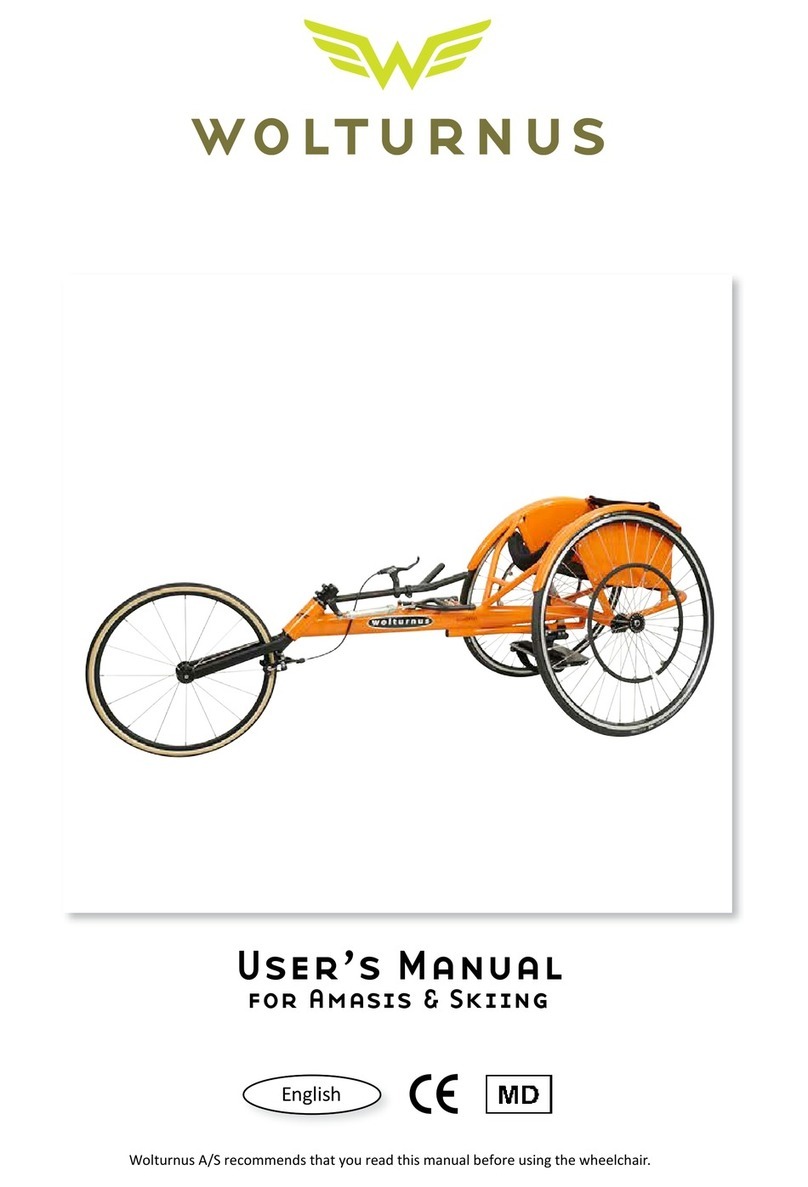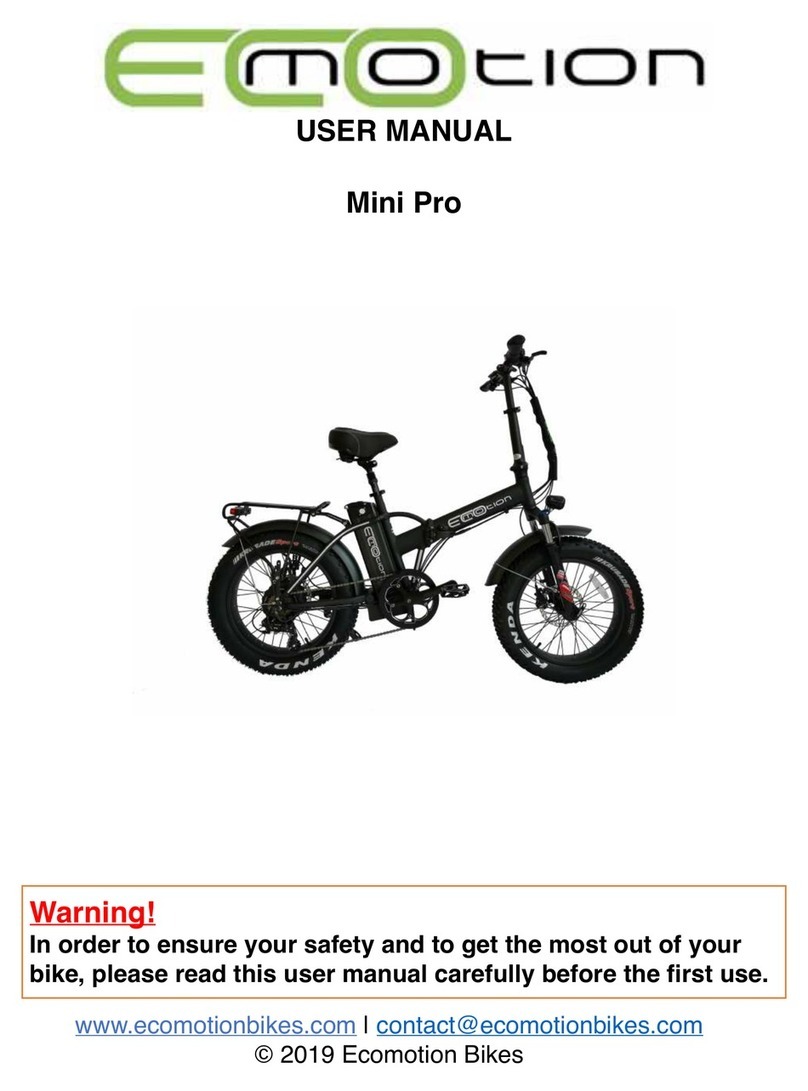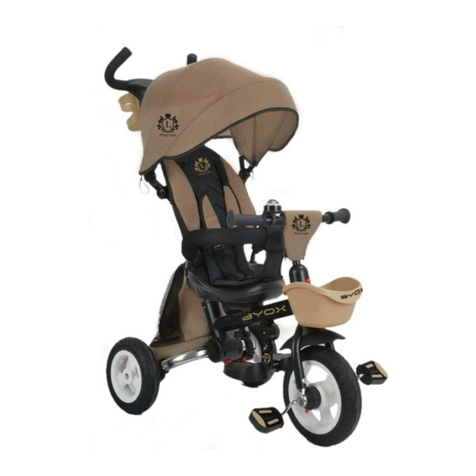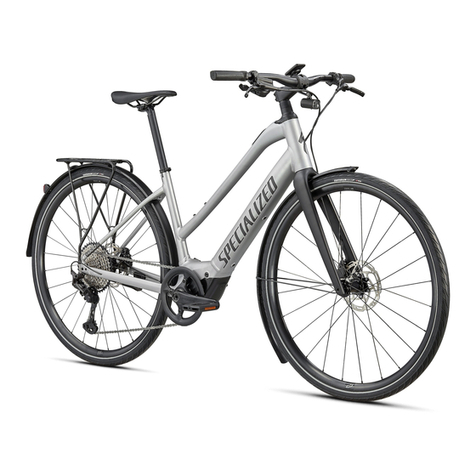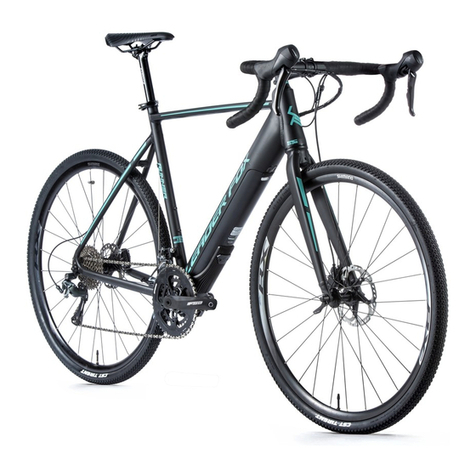HEINKEL Perle User manual

OWNER'S MANUAL
,/qal? rfr :/


A letter ro the Driver:
We can, wlth a clear conscience, assure you that your 'rPerle,r was de-
signed by experts and built by effj-cient, specialised craftsmen from the
very best naterlals. The ?rade Press has described this genuine EINKEI
creation - perfecteC only after the severest trlals over' rnany thousand.s
of oil-es i testing - asrra shi"ning exanple of present-day freedorn from
rnalntenancerr, a statement with which erren the so-caIled "first-tine-
driver" must agree in every respect.
In short, the EEINKEL people have done everything which is humanly
possible so that you can enjoy the troubfe-free pleasure of your 'r?erle"
for a long time. Eo{rever, thls depend.s a little on you.
You need neither atten.l Iectures at a Technical College nor attend a
mechanicsr course. It wil-L be qui-te suffrcae[t to read this ],ittIe book-
let and. follow its sj-mp1e instructions. fn special circumstancei, go
confidently to see your ffiINKEI Dealer, who, to a certai.n extent the lo-
ca1 representative of our After-Sales Service Department, will be ready
to give you a helping hand or a word of advice.
The 'TPERLE" will thank you for it and always make you justly proud of it.
Eappy driving !
ERNST IIEINKE1 AKTIENGESEIISCHAFT

Inlortant r:articulars.
Spares are obtainable only Please enter accurately and.
through ffiINKEI Dealers. quote in all correspondence:
If you have any trouble wlth
your "Per1e", always contact Chassis No.
a HEINKE! Dealer; do not approach
the EEINKEL 'vYorks direct, as it Engine No.
is always necessary to check de-
tails in sucti cases uith the Key No.
competent Dealer and unne ce s sarily
delays attention to your require-
nent s .
Teehni.cal d.ata.
EltGINE
Engine Mod.e} 477 A-l-
Cylinder Llght metal with hard-chromed.
. Diston track
Mode of operati-on iwo-stroker reverse-scavenging
Output l-t/Z n.p, at approx. IOOO r.p.m.
[umber of cylinder 1
Cyllndor bore 19 nn

Stroke
Srept capacity
Conpresslon rati-o
Lubricat ion
Ratio of nlxture
IGNITION
lype of igni tion
Make
Maxinun advanceal ignit i.on
Gap betveen contact breaker
point s
Spark plug
Spark plug thread
Spark gap
CARBURETTOR
Aoal-Figcher carbulettor
Carburettor passage
Main jet
lining jet
Air fi 1t er
4I.8 nn
!0 cc.
1 . <E
PetroL lubrication
1:2! ( oi1 : fuel )
CentrLfugal Generator ancl nagne to
assembly 5 v, 1i. (overseas 5 v,
1? r)
Bosch tlr1-uPA r/ttr/rl,z
2.4-2., nn befbre i.d.c. o, 21-240
before t.aI.c.
0.5 - 0.4 na
Be!|u, 24Oh4 u 25 or 22r/L4 \ 25, or
Bosch W 240 TI1 or W 22! T11
l[, 14 x L.25
0.4 - 0.5 mm
Type 10 DA 2l
l0 nrn
,4
tr-24
"Knecht" wet filter

CIITTCE Oi1-bath multiple-tlisc clutch
Operation of clutch By hand-1ever on Ieft handlebar
GEARS0X Two-speed type
0peration of gears By twist-gr1p on the left handLebar
RUNNING ON TEE ENGIIIE -nirst stage I z 6 .f6
lst gear l:1J,2)
.2nd gear I :8.0!
Chain drive
from gearbox to rear wheel. 1:I.815
Total reduction lst gear 1:28
2nd gear 1zL!.lJ
3]CYCLE OPERATION
Sottorn bracket stage L:4.47
Eotal reduction 1st gear 0.!8:1
2nd gear I.8l:1
Transmission ratio
rhen ki,ck start pedalling 1t27.6
POI9ER TRANS}IISSION
Engine-gearbox Seve l le aI Sears
Gearbox-rear wheel Single ro11er chaln, L/Z't x J/L5f
94 Links with joint 4

CHAS S IS
Frame Cast light metal frame
Front wheel suspensi-on Telescoping suspension with oil
Lubrication
Rear sheel suspension Pully-enclosed swing arm (chain oil
bath immersed), spring legs
. Eandlebar Handlebar unit with twist-grip gear
shift
Brakes Internally expanding brake s
Druo diameter 82 mm, width 15 mm
Operation of brakes lront brake by ]ever on right handlebar
Rear brake operated by the pedals
(Reverse pedal brake )
Stanal Si.ngle arn stantl, hinged
rllheels Interchangeable
Rios Light metal rias 21 x 2.00
Tyres 21 x 2.00
Iyre pressurE I'ront 2 atnospheres
Rear 2.2, atrnosphe re s
DIiT$SIONS
Cz=:a)-J. ). ength 1780 nn
X-::::':zse 11{! mm
iaxi:-.= :-e: gi.t 910 mn
B{axi:u. riai: 700 nn
Eeight of seat 7), nn
Ground clearance 1!0 mm (pedaf !0 mm) 5

ITEICHTS
lfleight of vehicle alone 16 ke.
Arlmissible load 1 person orrly
Luggage 10 kg.
FUE],, AND trUBRICANTS
Fuel A proprietary brand of at least 70 octane
Engine oi1 *.:"::.t"t."y two-stroke oil such as Mobil
lroportion of nixture 2!:1 (fue1:oi1)
Euel tank capacity J.9 litres, of n'hich approx. 0.j litres
forms a re gelve
0i1 in gearbox and swi.ng arn When full, 0.25 litres gear oi1 such as
Mob i 1o i.1 CBo
I"UE], CONSI]IIPTION
Standard consunption l.J litres per 100 km
IIGETINE
Eeadlanp 80 ram dian. glass
BuIb 9 _", ?,, watt outpu
( t ore lgn marke ts 6 v, f t/ !> watt -BrJ-ux]
Rear lamp bul-b 6 v, 0.6 watt output
(foreign narkets 6 v, 2.5-2./ watt) t

SIGNAI 3e11,
(foreign markets) bizzer
fn the interests of technical d.evelopnent, we reserve the right to
nake modifications.

- a heading yrhich is almost too overpoweri-ng
be done before starting up a 'rPerle".
The tyres must be pumped. u! to ful} pressurei
gauge s which break when dropped, but with the
cycle; surely, there is no need for us to go
PREPARING IO START -
for the little which needs
this is "tested( not with
thunbr just as rith a bi-
into details.
Do not budge until oil has been added to your fuel. Use only a well-known
brancll such as "Mobi1 Mix TT"r to the proportion 2!:1, i.e. ?) parts fuel
to l part oil. Open the fuel cock. Everything else comes und.er the headj.ng...
....STARTINC THN SNGINE
and this need gi.ve no cause for concern eitherr with the "Perle", for it
is started. from j.ts stand. - like a motorcycle, only much more easily. To
do thi s
1. Set the gear shift twist-grip at "0" and.' whilst the clutch is out' swlng
one of the pedals into the starting position.
2. Rel-ease the clutch lever; actuate the auxiliary starter (but only when
the engine is cold!) via the remote control lever on the left handlebar.
J. open up the twist-grip throttle roughly one-quarter, depress the raised
pedal as you wou1d. a kick-starter, give a short squeeze to the decompression
lever, and the engine, once it has firedr can be regulated to the proper
speed by the throttle. -6

An important point to watch is that the lighting s]'stem nust a}vays be
switched off whilst the engine is being started.
Any one-til:le cyclist who desires a taste of good old timesr however, can
start his "Perfe" on the roughly 0.2 h.p. power of his 1eg nuscles. Read.
the instructions given under 'tDriving away and changing gearrr.
IRIVING AWAY ANT CEA:{GI}IG GEAR
Once the engine has been effortlessly started, notorcycle fashion, it is
childrs play to nove off. Merely
pu11 in the clutch lever as far as it will go .....
snap the twist grip gear shift into positi.on 1 ....
ihen
s1or1y release the clutch 1ever, openi.ng up the throttle
gradually at the sane time.
0n the flat, it is possible after just a few feet to switch into second
gggl; this, too, is quickly and easily done.
]. fhrottle down
pull" in the clutch lever as far as i-t will go . . .. .
2. Set gear shift grlp to posltion 2.....
l. slow1y release the cl utch J,ever, accelerate and
drive on !
ff speed and power d.rop too shatply on an uphi1l stretch, there is abso-
lute1y no need for the "PerLe" driver to get off or to start pedalling; he
need only change down into Ist gear t g

1. Throttle closed to l/J, d"pr""s clutch lever .....
2. Twist gear shift gri.p to position 1 .....
J. Slow1y release the clutch 1eyer, opening up the
throttle gradually at the same tine. Idake the
gear change as quickly as possible, so that the
travelling speed d.oes not drop too Euch.
Starting on a hill gives the beginner a certain anount of trouble, because
the vehicle, following the 1aw of gravlty, has a natural tendency to go
backrards. He does not know whether to counteract this natural backward
novernent with both feet 'rdirect'r, namely by braclng them on the ground., or
by a foot or hand brake. Firstly apply the hand brake!
Xeep the hand. brake on until the engine has fired., the clutch has been taken
off, the vehicle put i.nto first gear and the left leg is free to support the
rheel. Now, with the right foot on the pedal (as lf intending to pedaL for-
xards, not backward.s!), stop the "Perle" fron running backwards. The left
hand can now slowly release the clutch leverr whilst the right gradually ac-
celerates. The engine will thank you for a llttle help from the peaials at the
outset, as the starting resistance on a hill- i-s qulte something.
Driving experience will show that steep downhill slopes should be taken in
the sane gear as would be used for driving up the same s1ope. The first gear,
which provides an addltional braking action on the engine, should therefore
be used. As is the case with any two-stroke engine' the effect of this 'raddit-
ional braking" action of bottom gear is not such that the driver need not call
on his front or rear wheel brakes. If the downhill slope is relatively long
and the front and rear brakes are used alternatelyr no strain is placed on them
and the driver is never in danger of reaching dangerous speeds unexpectedlj.10

As the engj-ne of the rrPerlerr gets its lubrication solely fronr the oil
contained in the fuel, it rnight well get too 1itt1e lubricant on pro-
longed downhi.ll slopes if the throttle is closed all the time. It is
therefore recommended. that in such cases the clutch be pul1ed in and
the throttle briefly but strongly opened up, so that the englne is
thoroughly lubricated.
Any former cyclist who stil1 wishes to get some of the old sport out
of his rrPerle" can d.ispense with the comfortable kick-starter and get
his moped gojng in crack-cyclist fashi.on by nedalling. ?his is how to
do it r
Open up throttle a little - pult clutch lever right in -
put noped into second gear - start pedalling - sIowly re-
lease clutch lever - briefly depress decompression lever
at the same time and the 'rPerle" engine is "therer'.
If the engine is co1d, the lever controlling'. the auxiliary starter should
be manipulate d..
Naturally, the "Perle" can also be ridden as an oriinary bicycle, i.e.
entirely without the englne vrorkin,q. Thanks to the ideal position of the
seat and the mopedrs easy runnlng, pedalling without the engine is by no
means the drudgery one might imagine. Just put the moped into second. gear
on the flat and into flrst on slopes and lock the clutch (see l,ig. KD 15
on page l{). 1l

STOPPING AND PARK]NG
is also very slmple with the "Perle". So long as there is no ernergency,
speed. can be reduced reasonably well before the stopplng point; wlth the
throttle closed, the vehicle can gradually come to a standstill, so that,
to stop it, only the clutch need be pu11ed in, the twist grip gear shift
ssitched to position "0" and the brakes apilied. A slight pressure on the
deconpression lever will stop the englne. ff tris siop narks the end of
the day for the noped, it would have been as well to shut off the luel
cock before stopping the .en6ine, so that the 'rlerle'r is :lot left for any
length of tlme with fuel in the float chamber' otherwi-se the fuel evapor-
ates leaving the oil on lts own in the float chamber' and this can give
trouble rvhen the moped is next started.
The moped can now be parked or left leaning agaj.nst a wa1l. In this respect '
it nust be remembered that the stand serves nerely to park the moped and
must be raised before the driver takes his seat, because this stand ls in-
tended. to take the weight of the mopedl but not that of its d.river.
t2

NU}'I:]NG IN
I.'ever let anyone tel} you otherlvise - vhether an ergine later on nr.oves to
tre a so*rce only of untroubled. joy to its olrner or of repeateC worry still
depends largely ou its rur,ning-in. It is true to say that piston seizure,
so feared at the outset in rew engines, is as good as i-mpossible with the
I'Pexl,er', because its 1i6;ht metal cyllnder wlth its hard-chronres track and
the flat pi.ston are rnade from the same material. Both, therefore, have the
same coeffj.ci.ent of exparsion, i'rhich , expressed ir: rlair: 1an5uage, means
that as tirey heat up, both cyf-nder and pi.stcn "Jrovr r.lth each other,
and that the distar,ce betvreer. then remaj.ns cor.stant. Ho',,rever, a certain
amount of caution j.s ca]led for iyher: running-in in view of the fict that
the plston rings a!:d gear wheeJ.s are rot yet rrun-int. ft is wrong to demand.
too much of the engine for the first J00-400 !-ilometres, just as i.t is vrrong
to seize every opportunlty (e. .j. .,fter a crossing) to show off the rcmar.kable
acceLeration of the "Perlerr or to vaunt its climbi.ng capaci.ty or: uphi11 slopes
(where possible with a heavy load). iiovever, it is just as wrong to d.rive
too cautiously, too J-ong in flrst or to let the engine pull i.r top gear. The
fe,ctory-new "Fer'Ie" er,gine has aLready completed a test rur: at the l,orks and
just needs 1,o be fir:ished off by the Criver. I ormal dr.ivj.ng wlth at: average
Ioad is the best way to lchieve this.
Ilabitually late-sl-eepers, tvho liave to Lrurry to work, should, for oreferance,
not use these rushed journeys to make up their runrin6-in r."Li1eage, but
shoul,d do so or, leisurely 1,/eek-end trips. I-iorvever, there are other people
who climb or. thelr machines .l.ulte co;nposedly ir ."he ;:'or.ning, start up vrith
the clutch yleldingly er;aged, acceleraie rormally and reiiscnably into the
6ears arf ,vhose ser,ses +,e11 ihem lhat the er-gine is iurning over r,icely and
vrhen to chan5e <iown. Such people cat: cheer-fufly lorget the old rule 11

Dor:rt rur-in on the way to work!rr. The pi-oviso is merely not too short a
journey, on which the engine attains normaf running temperature.
ff rurning-in is put off for Sur:day riding, therl it is best to choose a
route vrhich has, as far as possible, ,ra bit of everything'r, i.e. straight
stretches on the flat, 5ertle slopes and curves. Such corrditlons recessitate
conscie:.tlous changine of gear, anC this doeb both engine anC gear mechanism
good.
After about 1r0 kilometres have beer clocked altogether, even a begirner will
noti.ce that the machine is grr,dually starting to riloosen up"; fu11 tl-rrottle
can noyr be a,op1i.ed for brief spells on the flat, Later on, these perlods in
full throttle can be ir,ore frequently repeated ar:d also extended in duration.
After some ,00 to 400 kilometres, the life of the engine can start in full
earnest.
TESTING ?OB SAI'ETY 1}, TRAI'!'IC
is a particularly tick-lish point. In the unforturate ever:t of a road accident
involvin5 severe materlaf or even persoral damage, the party whom the legal
experts can accuse of rrr:eglecting his vehi.cle as regards safety in traffic"
wi]I come off bad1y. Ile will also cone off badly according to Road Traffic
Begulations if, prior to commencing the jou:'ney on whlch the accident occur-
ed, he faj.led to check that
1. The ;;ost important screws ard nuts ort steerlng, wheels, engine, frame
and control l-evers are thoroughly tight;
2. the brakes are working perfectly; 14

J. the steering is snooth and easy;
{. the control levers are functioning properly;
!. the tyres are i.n or,ier (tyre pressure and tread) i
5. the lighting anc signal units are working.
But fortunately, this is not such a discouraging business as it mi.ght be
thought fron a first glance.
The owner of a 'r?erle" receives frcr the IEII{KIL ilorks a m3chine i-n which
Iteros 1-5 vrere all 1AC /1, in order. Keeping them j.n thi.s eondition requires
no great expenditure of time or money, particularly since carefully-organized,
genuine after-sales se:'vice is guaranteed. through the various HEINKEL Service
Stations. 'rThe nost ircportant screws and nuts on steering, tvheels, engine,
frame and control levers" do not come loose suddenly. A consci.entious garage
attendant w111, in most cases, notj.ce an.y loosening when cleaning the ma-
chine or during the carrying out of other work and lvil1 put it right in good
time and with no irouble by roeans of the tool kit supplied vrj.th the moped,.
?hat brakes, steering, control- levers, tyres and, lastIy, the regulati.on be11
(overseas optional btzzer) are in order, can be checked on any trip "to the
post-box. "
The lighting, however, is altogether a dlfferent matter!
Before a short journey in the town, the ncped drlver can see at a glance
whether his rear 1i-ght, tail and peda1 reffectors - these are regufation! -
are inasked by dirt or not, During the actual journey, he can - similarly
15

as required by the regulations - see by means of a so-called side func-
tional check (whi-ch takes the form of a spot of light on the road beside
the driver) uhether "rear light is burning, wlthout any subsiantial change
in the posi"tion of the head or body being necessary".
Please, Dear HEIill{ET, Driver, make sure that there is rotl:ing aniss with
the lights on your "Perle", as
"the Lighting fitments must be ir position a4d f!_93:39.
older even b-.t day,
an d.
'?],{opeds which are not fi.tted up as r"luired by the regu-
lations, ln particular ::.opeds vhicl: are ri.dden in dalk-
' ness Cespite failure of the liShting apparatus' sau be
ec i zai r-.,r ?h. .r1ice'j.
CLEANINE, CARE AND MAIITTSNANCE
of a vehicle means fess trcuble the nore beautiful it i.s and looks and the
greater the attention paid by its creators to its construction. l{o wonder
that "?erle'' owners are always so especially iuick to finish the necessary
jobs..Those passionately fond of "Tinkering", hovrever, are not very pleased
about the absolute superfluity of maintenance of many parts of the 'rPerle're
because they cannot find enough appllcatlon for too1s, gre3sc guns, oi1-cans,
etc., on free Saturday afternoons.
to

Cleanlng and Care.
Dirt does not easlly adhere to the harmoniously snooth outer surface of the
"Perle" frame. lio''vever, if, durlng a long ride ln bad lyeabher, any dirt should
have coflected on the other parts, loosen it with warn water, softened b/ th.e
adCition of a nild cLeansing agent, and thel rinse off. In an emergency, :1ear,
cold tap-?ater rvi11 do it also. Under lio clrcunstances, though, should I ::trong
jet ol water 'le used, since ihis forc.es particles of Cirt through the bearing
seals and water is nc good either for the aj.r filter or lor the generator
dynamo.
A gooC deal of dirt collects in thc corners where the cool^ing fins join the cy-
linder, bccause this is so close to the road surface. 1f this dirt is al1or.red
to remain there undisturbed, .t can seriously affect the cooling and thus en-
danger the working of the cylinder. It should., therefore, be loosened vrith soft
sater and brushed out - though, naturally only when the englne is cold..
After this ivash, the "Care" stage starts, fron top to bottom. The foam rubber
seat is cleaned with a find'washing agent and the frame isith a suitable polish
(such as Polifac lvith silicones). Ttre engine should be washed lri-th a petrol
cleaner, paraffin or with Cehapon (fo11or, ihe makerrs instructions closely),
and if there is still tine, any drj.ve:: particularly ccncerned vith care of hi.s
'rPerlerr can also give the chromium-pl-ated parts a thin coating of vasellne or
slnilar grease.
lflaintenance,
The "Perlerr engine is positivell' lubricateC by the adJltion of oil to the fueI,
eliminating maintenance in its main sense. 17

After roughly 2000 kllometresr travelling, the three screws (KD l5) should
be undone and the exhaust unit re;:oved anC di"smantled. ?he ir:slde of the
si.lencer and the exhaust slit i!: the cylinder should be cLeaned of any o1L
carbon residue \,rith a hardlrood scraper or a blunt netal object. Should the
output from the engine anC at ihe sa;re tir]]e its tipurr dete]:iorate even
before these 2O0O kllometres are up, then the 'rde-coke', should be carried
out correspondirrgly sooner.
The level of oi1 ir thc rearLox should be checked regularly (see detalls
on Servicing schedule) uiI--II-g " u r oil changed, .s ih" ca"e may be. The
fixst oil change at 5CC l.:r1or:eires is of particular importancel (fiS.7)
To check the oil leveL, i.inscre!v the oil-fi11er cap. ff , .,,ihen the machine
is level", the oi1 does no: coiile just up to the hoIe, then top up by ne-
cessary aiiount rrithout Jela.y (see illustration).
To chbnge the oil (rhich should a1',vays be done whilst the engine is warm),
rerjove the screw plugs fron the filling hole and oil drain and a1low all
the oId oil to run out conpletely. To make sure that every drop runs out
of the svring arm also, lift the rear wheel- off the ground.. Afterrvards,
replace the pJ-ug in the 01] drain, set the machine down on the level once
again and fill up with nex prcrlietary Sear oi1, such as "Mobj.loil C 80'rr
until the filling hole is reached to the point Yrhere the oiI tends to
drip out. 'r{hen chariginS the oif for the first time, the gearbox should
be rinsed out thoroughly lvlth a ::ir.sin3 oj.I such as r'IIotilene Spi.ilex".
After a few thousand teilr-char,;es, it rust r-ct bc for5otten that the
gear cable will have stretched a little. Cr- a 'crand-riew "Perle", ln 18
Table of contents

